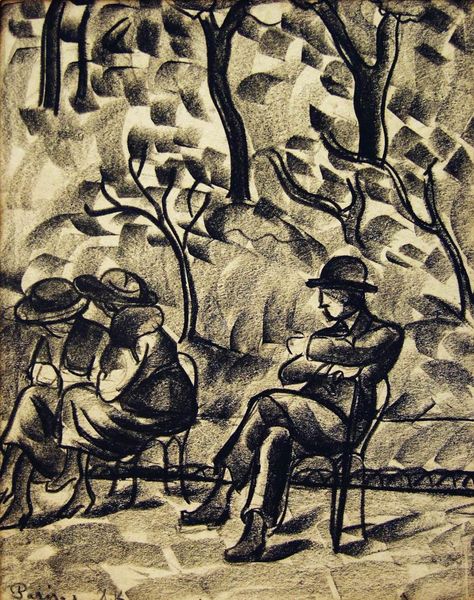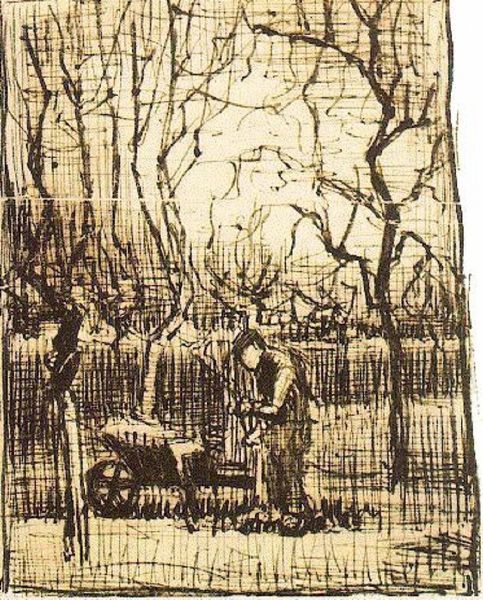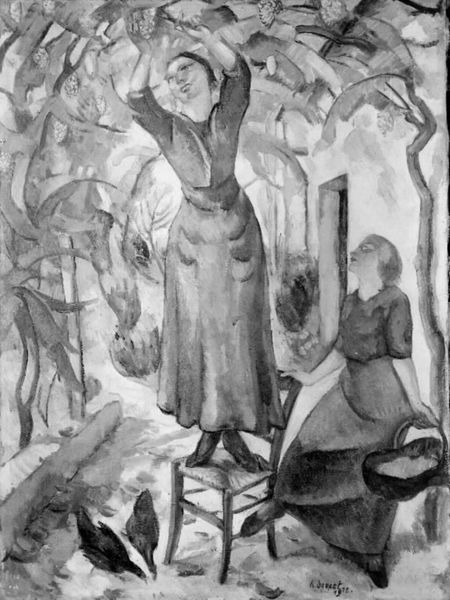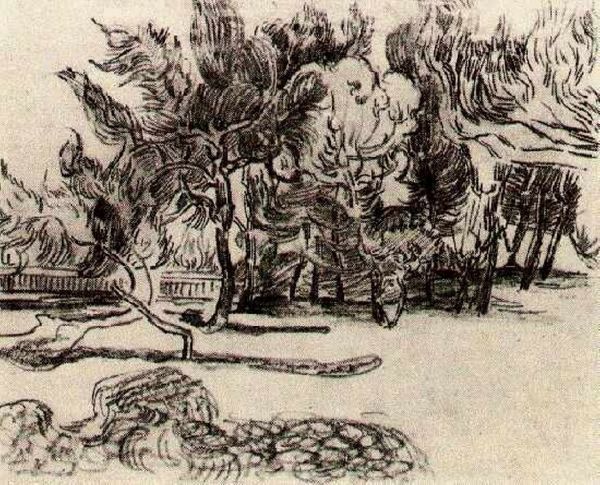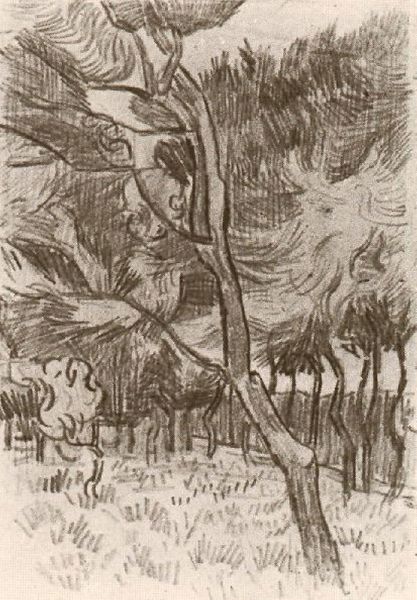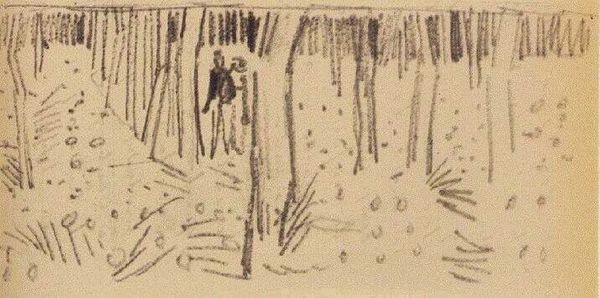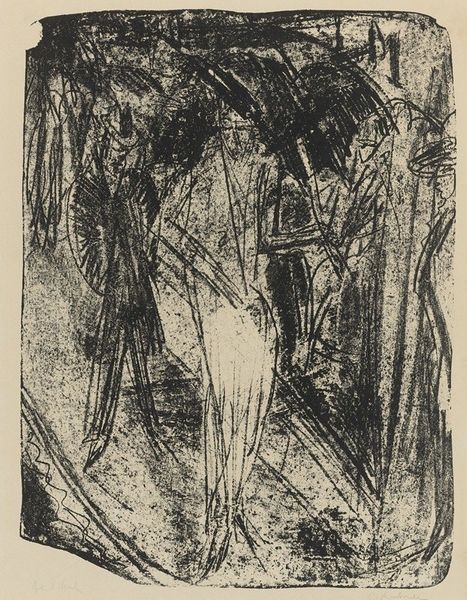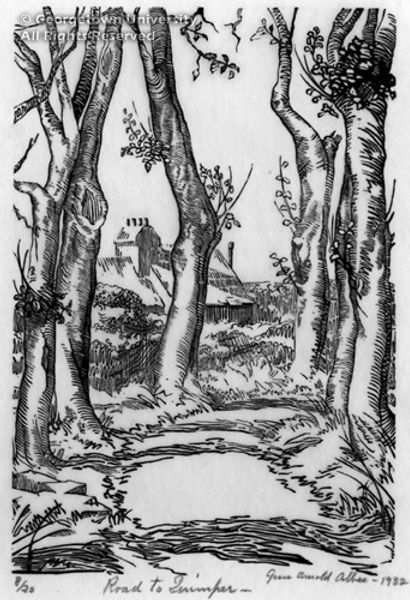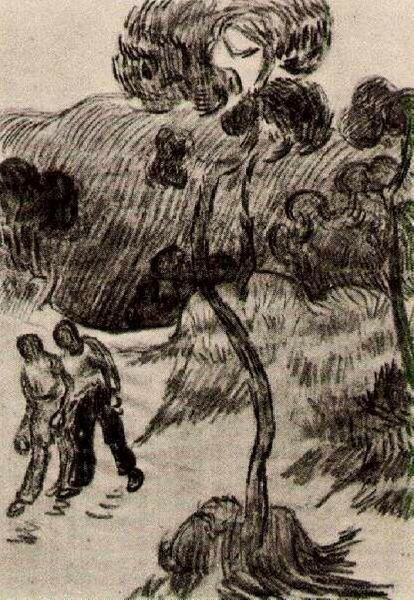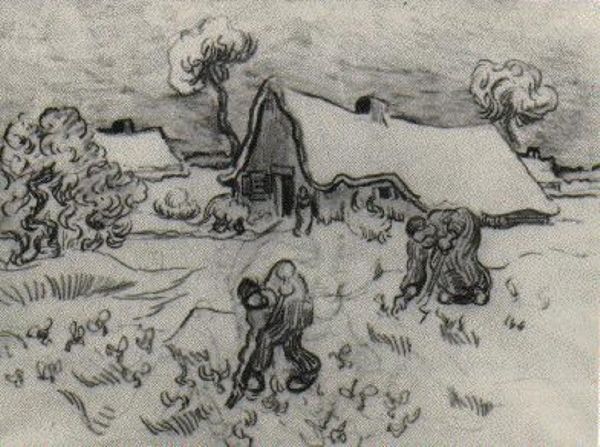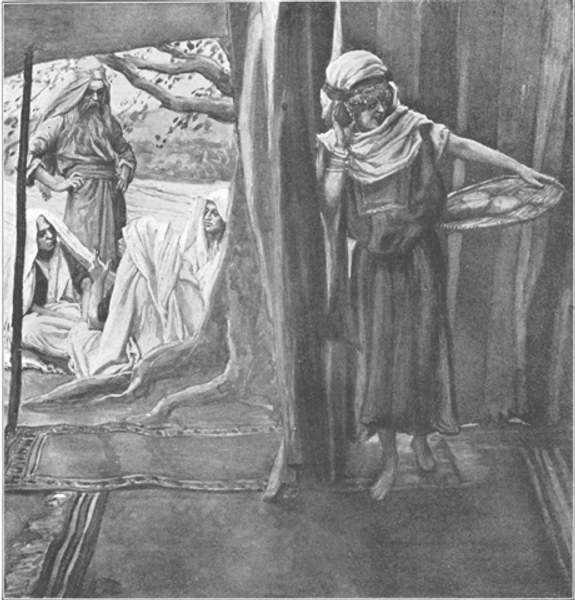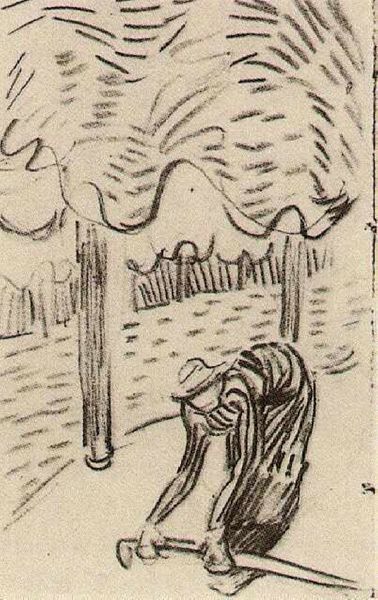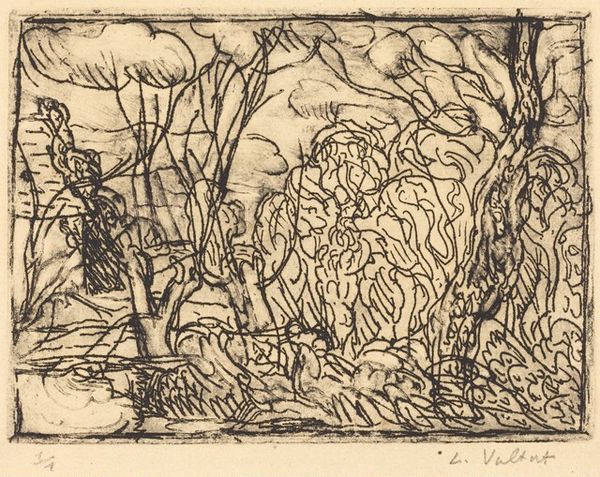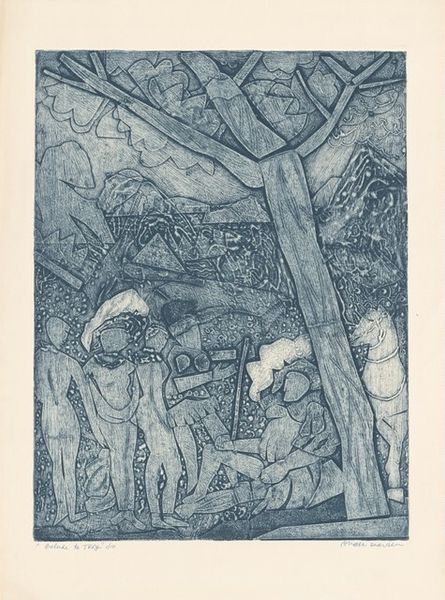
Dimensions: 23 x 18.5 cm
Copyright: Public domain US
Editor: This pencil drawing, "Paris," created by David Kakabadzé in 1920, gives a fascinating glimpse into Parisian life, seemingly in a park setting. The mark-making seems very intentional; how does Kakabadze’s medium and technique speak to the subject of Parisian life at the time? Curator: Let’s consider the economic situation in Paris post-World War One, where access to resources might have influenced Kakabadzé's choice of readily available and inexpensive materials like pencil and paper. Could the limitations of these materials be reflective of the societal constraints and material conditions present at the time? How might the ‘ordinariness’ of the materials – pencil on paper – actually serve to democratize the artistic process, opening up representation of everyday Parisian life? Editor: That's an interesting point – framing it in terms of accessibility! So, you’re saying the very simplicity of the materials could highlight the common experiences of people in Paris at the time? Curator: Precisely! Also, consider the labour involved in creating this piece; it is evident that pencil drawing is immediate but demands control and precision. The visible marks remind us of the artist’s hand and its skill. How does seeing the ‘labor’ change our interpretation, challenging art that prioritized perfection and illusionism? Editor: I never thought about it that way before! Focusing on the process makes me appreciate how deliberate each choice was. Curator: Examining it through a materialist lens definitely reveals a deeper story about the social and economic realities that shaped Kakabadze's art. Editor: I will definitely look for the materials, the making of, the labor involved in the process. Thank you.
Comments
No comments
Be the first to comment and join the conversation on the ultimate creative platform.
